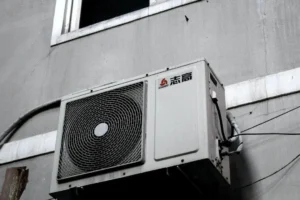Industrial automation is transforming remarkably, with factories and production lines embracing increasingly sophisticated tools to increase productivity. The adoption of touch panels has been at the forefront of this change, as these innovative devices fundamentally redefine how operators interact with machines. Rather than relying on outdated mechanical switches, dials, or control levers, operators now use smooth digital interfaces that allow for greater efficiency, fewer errors, and more streamlined workflows. Touch panels bridge traditional manufacturing and the digital age, enabling seamless communication between humans and machines.
Central to facilitating this shift is the continuous evolution of the human machine interface (HMI), a technology increasingly vital for maintaining high control room efficiency and customized production capabilities. Today’s touch panels do much more than replace buttons—they empower workers to monitor complex systems at a glance, input data quickly, and benefit from interactive control schemes that adapt to their needs. This digital transformation has allowed companies in fields as diverse as food processing, energy, electronics manufacturing, and automotive assembly to enhance safety, boost output, and keep pace with the demands of the global marketplace.
Enhancing Operator Efficiency
Traditionally, operating heavy-duty machinery involved learning a bewildering array of buttons, toggles, and indicator lights. Even minor mistakes could delay production or lead to costly downtime. With touch panels, user interfaces are consistent, adaptive, and visually intuitive, drastically reducing confusion and making the process friendlier for operators of varying experience levels. The interface can be changed easily to match the workflow of a specific shift or product run, providing flexibility and reducing the rigid constraints of mechanical controls.
Faster Learning and Fewer Errors
Touch-based HMIs simplify onboarding, with a 2023 Ohio case showing new hires learn 45% faster on touchscreens than traditional panels. This quickens learning, reduces errors by providing context-specific instructions, and promotes safety, confidence, and standardization. These benefits lead to cost savings and higher margins.
Agile Operations
Touch panels provide unmatched agility on the production floor. Unlike legacy systems needing physical changes, they can be reconfigured with a few taps or software updates. This allows quick switching between production runs or new procedures, helping factories adapt to customer demand or regulations. Custom menus, work instructions, and maintenance schedules can be updated instantly, enabling workers to keep up with changing needs without extensive retraining.
Integration with IoT and AI
The proliferation of touch panels is closely intertwined with two other transformative trends: the growing impact of the Internet of Things (IoT) and artificial intelligence (AI) in industrial automation. Touch panels now facilitate seamless connections between factory operators and the myriad sensors, cameras, and devices scattered throughout an industrial environment. This means operators no longer rely solely on manual observations or periodic checks. Instead, they can access live system status and performance feedback at a glance, all thanks to integrated data feeds drawn from the IoT ecosystem.
Predictive Maintenance and Data-Driven Insights
When touch panels are integrated with smart sensors and AI technologies, their insights go beyond simple status updates. Teams can view detailed analytics on operating conditions, historical trends, and predictive alerts from the HMI. This is at the core of predictive maintenance, where AI examines sensor data to spot patterns that may indicate an imminent problem—a failing motor, unusual vibration, or temperature spikes. Downtime caused by sudden equipment failures can be reduced by up to 30%, allowing plants to maintain higher operational availability, minimize service costs, and produce more in less time. As more IoT solutions are adopted, the value provided by intelligent touch panels grows exponentially, laying the groundwork for the next wave of smart manufacturing.
Advancements in Durability and Customization
Modern factories expose equipment to dust, moisture, high pressures, chemicals, impact, and temperature extremes. Earlier digital control panels struggled in harsh environments, but ongoing R&D has led to touch panels designed for durability. Manufacturers use hardened glass, IP-rated casings, oil and solvent resistance, and vibration-proof mounting to enhance lifespan. These panels are versatile and suitable for clean-room semiconductor fabs or industrial foundries.
Software customization is crucial, as each industry has unique language and standards needs. Modern touch panels can be tailored for specific applications—like controls for packaging, recipe management, or energy monitoring—making them highly relevant and helpful.
Real-Time Data Visualization
Perhaps one of the most transformational aspects of touch panel adoption in automation is the ability to visualize data in real time, with precision and clarity previously unimaginable. Operators and managers are no longer limited to numbers on printouts or cryptic indicator lights. Instead, modern touch panels present dynamic dashboards and visual cues—color-coded alerts, animated progress indicators, and trend graphs—that bring critical information to the forefront. These tools enable faster, more intelligent decision-making and allow teams to spot issues or inefficiencies immediately, rather than after the fact.
Better Process Control
Accessible, real-time data is more than a convenience; it’s essential for maintaining high quality and process reliability. With touch panels delivering instant updates, operators are alerted to abnormal conditions, changes in production rates, or deviations from set points as soon as they occur. This facilitates both rapid intervention and the ability to fine-tune processes on the fly. Enhanced process control isn’t just about avoiding downtime; it’s about continuously improving output quality and reducing waste, ultimately driving competitive advantage and customer satisfaction.
Improving Safety and Ergonomics
Safety is a foundational priority in the industrial sector, and digital touch panels lend themselves to heightened safety protocols. Operators receive clear, on-screen prompts for every crucial safety check, maintenance task, and emergency response action. Many panels offer context-aware visual warnings and lockout procedures, meaning certain functions are inaccessible unless safety conditions are met. This built-in guidance helps prevent accidents, reduces the risk of operator injury, and ensures compliance with workplace regulations.
Replacing physically demanding, repetitive manual controls with touch interfaces helps minimize ergonomic strain. Ergonomically designed screens positioned at optimal viewing heights and gentle tapping rather than twisting or pushing collectively reduce physical fatigue and the likelihood of repetitive strain injuries. This ergonomic advantage is especially relevant for workplaces with lengthy shifts or aging labor forces, where worker health directly influences plant performance and morale.
Future Trends in Touch Panel Technology
Touch panel technology is poised for continued innovation in the coming years. We are seeing next-generation devices that support multi-touch and gesture recognition and incorporate Augmented Reality (AR) features for hands-free instruction or equipment diagnostics. Voice integration is being explored as another step toward entirely intuitive human-machine interactions, allowing operators to carry out commands without even touching the screen.
Future touch panels may offer even richer analytics as AI evolves, with machine learning-driven insights being presented directly in interactive visual formats. This will further enhance preventive maintenance, resource optimization, and product traceability. Ultimately, these advances will support enhanced production flexibility, higher-quality outcomes, and better operator experiences—cementing the touch panel’s status as a critical enabler for Industry 4.0 and beyond.
Also Read- What First-Time Buyers Hate About Real Estate Apps










